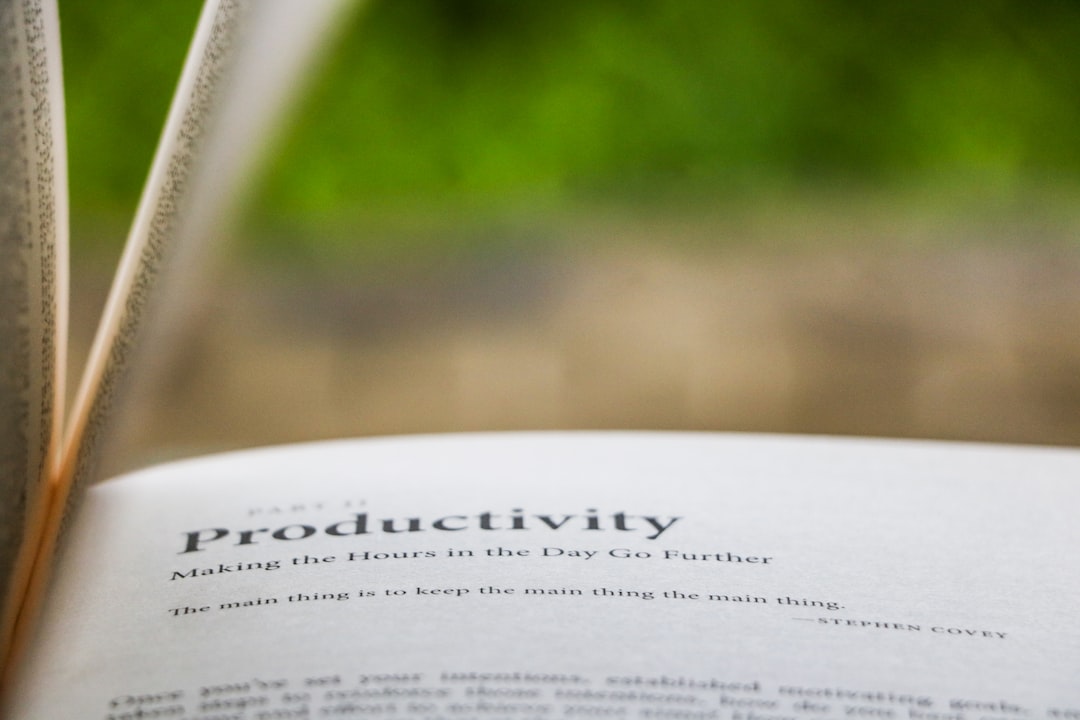How To Optimize Your Time With A Time Blocking Planner: 5 Free Templates
How To Optimize Your Time With A Time Blocking Planner: 5 Free Templates
1. Introduction
Finding it hard to juggle work, family, and social commitments? Feeling like there are not enough hours in the day? You are not alone. In today’s fast-paced world, it is more important than ever to learn how to optimize your time.
One way to do this is through time blocking. Time blocking is a time management technique where you schedule out your day in advance in blocks of time. This helps you to focus on one task at a time and avoid multitasking, which can actually lead to reduced productivity.
In this article, we will provide you with 5 free time blocking planner templates that you can use to help you get started. We will also give you some tips on how to make the most of this technique.
https://unsplash.com/ko/@bajkorenata
2. What is time blocking?
Time blocking is one of the most effective time management strategies that can lead to significant productivity gains. In short, it involves breaking down the day into sections or blocks of time, with each block dedicated to a specific task. This means that instead of multitasking, where you switch between several tasks at once, you focus on one task at a time.
For instance, you could allocate one hour for writing your report, 30 minutes for checking emails or scheduling meetings, or 30 minutes to plan your day. This strategy helps prevent procrastination, reduces clutter in your schedule, and makes it easier to focus on the task at hand.
Time blocking can help reduce stress and make you more productive. Furthermore, since time blocking involves creating a clear plan of action, it can make it easier to accomplish your goals.
https://unsplash.com/@schmaendels
3. The benefits of time blocking
Time blocking has many benefits.
Firstly, it helps maximize focus on each task by eliminating distractions and interruptions. By allocating specific blocks of time for specific activities, you can manage your focus and increase productivity significantly.
Moreover, time blocking can help you prioritize tasks. It encourages you to identify what you need to do and prioritize accordingly. This eliminates procrastination and helps you stay on track with your goals.
Furthermore, block scheduling helps combat anxiety and stress by making your workload more manageable. By breaking tasks down into smaller blocks of time, it gives you a sense of control and helps to improve your overall mental health.
Lastly, time blocking is incredibly flexible and can be customized according to your preferences. You can use it to track your progress, set deadlines, manage your workload or plan according to your availability.
https://unsplash.com/@minhphamdesign
4. How to create a time blocking planner
Creating a time blocking planner should be a simple and stress-free process. Here are some simple steps to get you started:
1. Start by figuring out how long each task will take you. Take into account the estimated time for research, project management, writing and any other activities that you need to complete.
2. Make a list of your main tasks, breaking them into manageable blocks of time. Depending on the complexity of the task, this could range from 30 minutes to several hours.
3. Next, assign each task its own time block. You can set these blocks for the morning, afternoon, or evening depending on the complexity of the task and when you feel you can focus best.
4. Schedule in any breaks you might need. This could be a lunch break, exercise break, or even a short break to check social media — whatever it takes to keep you refreshed and focused.
5. After completing the plan, you can either print it out or have it open in your browser as you tackle each task.
Creating a time blocking planner can help you stick to deadlines and maximize time management. It can also create an environment for long-term success as you learn about yourself and plan accordingly.
https://unsplash.com/@carlheyerdahl
5. Free time blocking planner templates
If you want to get the most out of your day and maximize your productivity, it's essential to create a time blocking planner. A time blocking planner is a simple planning tool that helps you schedule your tasks and manage your time more efficiently.
Here are five free time blocking planner templates you can use to optimize your time:
1. The Beginner's Time Blocking Planner Template: This time blocking planner template is designed for beginner time blockers, with easy-to-follow instructions and pre-filled time blocks.
2. The Advanced Time Blocking Planner Template: This time blocking planner template is designed for the experienced time blocker, with more complex features and an in-depth look at the individual tasks.
3. The Time Blocking Weekly Planner Template: This planner template includes daily, weekly, and monthly time blocks for a longer-term outlook.
4. The Dynamic Time Blocking Planner Template: This template is perfect for dynamic, active tasks, with customizable time blocks and multi-column layout.
5. The Multiple Time Blocking Planner Template: This template is ideal for tasks that involve multiple activities and involve multiple steps.
Using one or more of these templates, you can create an effective time blocking planner that will help you stay organized and productive in your daily life.
https://unsplash.com/@bramnaus
6. How to use your time blocking planner
Now that you have your free time blocking planner template, it's time to use it! Here are six steps you can take to effectively use your time blocking planner:
1. Plan out your day: Start your time blocking process by envisioning the best possible outcome for your day. Visualize what you want to accomplish and when.
2. Categorize tasks into blocks: Break down your tasks into organized chunks of time by categorizing them into blocks. Assign specific blocks of time to each task.
3. Prioritize and focus: Focus on completing the most important tasks in each block first, then the smaller tasks that require less focus. This helps you stay productive and stay on track.
4. Track progress: Monitor your progress throughout the day so you can make sure you're staying on track. If a task takes longer than anticipated, you can move to a different task and come back to it later.
5. Take breaks: Don't forget to take breaks in between your blocks. Taking regular breaks allows you to stay focused and energized.
6. Review and reflect: Take a few minutes at the end of the day to review your progress and reflect on what you accomplished. Make any necessary tweaks to your plan so it will be more effective in the future.
By following these steps, you can ensure that you make the most of your time and maximize your productivity. With a
https://unsplash.com/@finesite
7. Troubleshooting common time blocking issues
Time blocking is an effective way to increase structure and optimize your day, but it isn't foolproof. Here are seven common troubleshooting issues that you may encounter:
1. Not allotting enough time: It's easy to underestimate how long a task or activity will take. Make sure you add an extra buffer of time so you don't rush through tasks or get overwhelmed trying to complete them.
2. Blocking off too much time: On the other hand, blocking off too much time can lead to complacency and reduces the sense of urgency needed to complete the task.
3. Scheduling too many tasks: If you schedule too many tasks, you may not have enough time to complete all of them. Prioritize the things you want to accomplish and make sure you don't overwhelm yourself with too many activities.
4. Failing to adjust your schedule: As life happens, it's important to adjust your schedule when tasks become too complicated or time consuming. It's better to take more detailed breaks rather than prolonging the task.
5. Giving up too early: It's easy to give up on a task when it is taking too long or not going in your desired direction. Push yourself to persist and the results will be worth it.
6. Focusing on the big tasks first: It may seem logical to focus on the big tasks first, but dealing with the small parts of a task can help you reach the
https://unsplash.com/@anete_lusina
8. Conclusion
Time blocking is a great way to optimize your day and maximize your productivity. By having an organized plan and timeline, you can use your time more effectively and reach your goals faster. However, there are a few key points to keep in mind. Make sure you avoid scheduling too many tasks and give yourself an appropriate amount of time to complete them. Realize that life happens, and be willing to adjust your schedule as needed. Don't give up too early— persistency will pay off. And, don't forget to prioritize the big tasks first. With the right plan and a little practice, you'll be able to make the most out of your time.
For any question, please contact us in OpenTimeClock.com. https://www.opentimeclock.com.
Created with the Personal Edition of HelpNDoc: Transform Your Word Document into a Professional eBook with HelpNDoc






